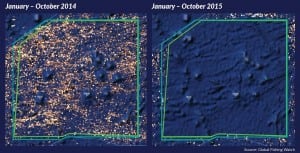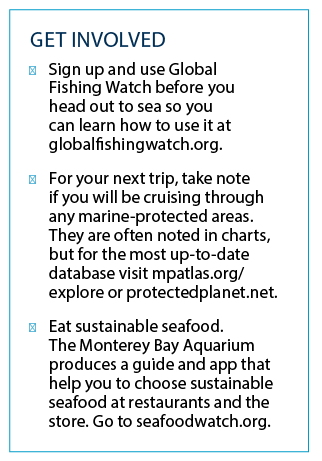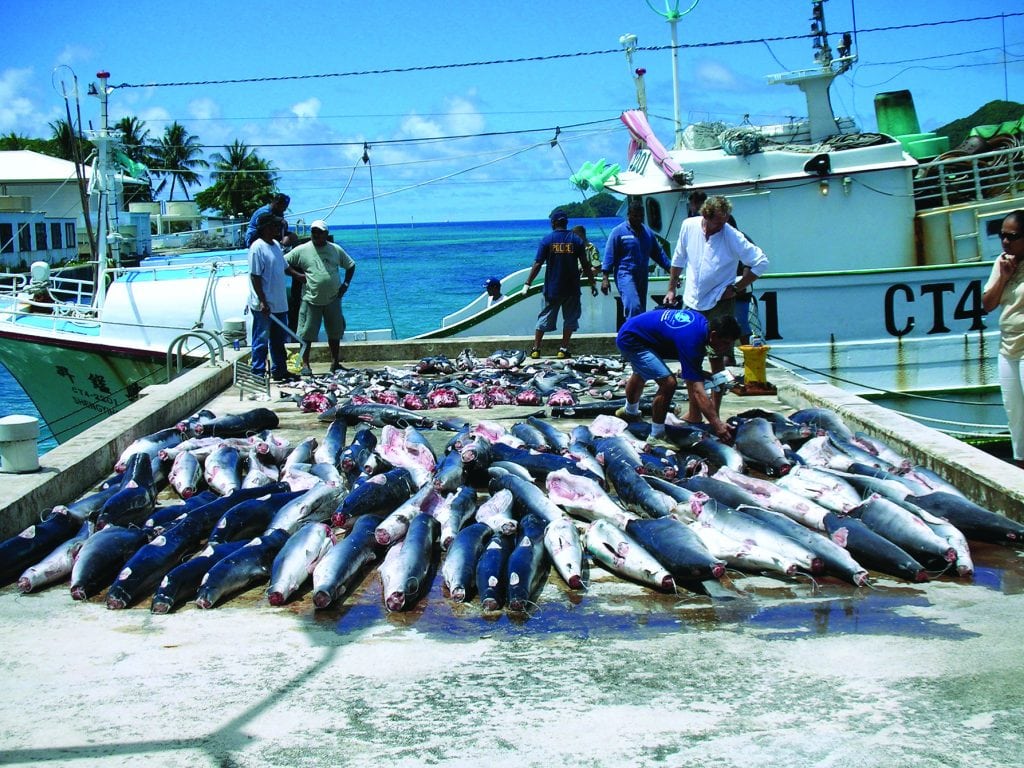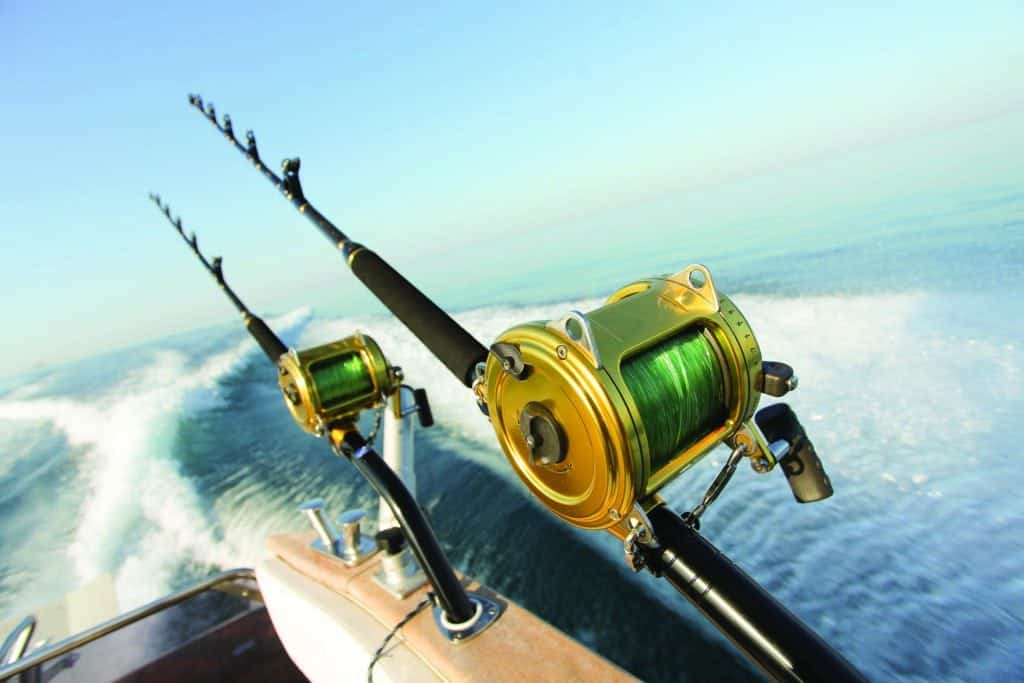[vc_row][vc_column][vc_column_text]
Private citizens now have the means to take action against illegal fishing.
Our oceans are under siege from a variety of threats, including the excessive extraction of wild fish. Most fisheries in the world are fished beyond their limits— indiscriminate bycatch is decimating populations of marine wildlife, and bottom trawling and other destructive practices are destroying nursery and spawning habitat. This results in rapidly declining fish stocks and population crashes that ripple throughout the ocean food web.
The good news is that oceans are resilient and can regain their former abundance, but for that to happen we must manage our fisheries responsibly. More and more countries are putting in place catch limits and habitat protections that are necessary to rebuild ocean resources. But for these efforts to be successful, the rules set to protect our most precious ocean resources must be vigorously enforced.
[/vc_column_text][/vc_column][/vc_row][vc_row][vc_column][vc_column_text]
Sailors understand what is at stake. And more than others, they are in a position to help monitor the conduct of the global fishing fleet to hold it accountable. Global Fishing Watch is the first technology platform that allows anyone with an Internet connection to see global fishing activity in near real-time, for free. Global Fishing Watch—built by a partnership between Oceana, the search engine giant Google and the technology nonprofit SkyTruth—is free, easy to use, global in scale, and open source, which means as more users access the technology and create additional applications over time, the tool will become even more powerful.
Global Fishing Watch uses the Automatic Identification System (AIS), a tracking system employed by more than 200,000 vessels around the world for safety purposes. Large fishing vessels, including the ones that catch the most fish globally, are required to utilize AIS to prevent collisions at sea. Global Fishing Watch can access AIS data, which typically includes vessel identification information, and plug it into algorithms built to use vessel movement and location to identify apparent fishing activity. It then makes information on where fishing is occurring available.

This is where sailors come in. Imagine being out on the water and you see a passing fishing vessel. Perhaps it seems suspicious indicate whether the ship has been fishing, where and when it fished, whether it fished in a protected area, and where and when it returned to port.
Your “eyes on the ocean” might also identify odd behavior like a vessel meeting up with another ship at sea for a potential transshipment or a vessel that does not have its AIS activated. If you are sailing in or near a marine protected area and see a vessel fishing, you may be able to determine whether that ship was fishing in a “no-take” area. In all cases, reports can be made through Global Fishing Watch, and your report will be sent to the relevant enforcement agency.
When citizens show governments that laws are not being enforced, it will put pressure on those governments to act. Global Fishing Watch will help sailors, fishermen and everyday citizens hold governments accountable to enforce fishery laws.
Global Fishing Watch is especially powerful in the hands of sailors around the world, who can match eyewitness accounts with recorded satellite data. Imagine if every sailor in the world could give evidence to authorities enabling them to determine which fishing vessels are following the law and those that are not.
Global Fishing Watch can also be used by seafood retailers to identify the source of the seafood they purchase for sale, by seafood certifiers to strengthen the certification process, by companies that insure fishing vessels to track their policy-holders, and by honest fishermen who want to ensure the rules are enforced so that they can compete on an even playing field. The project is brand new and will reap the benefits of combining technology with illegal, unreported and unregulated fishing in an effort to curb those practices.
[/vc_column_text][vc_cta h2=”Global Fishing Watch uses the Automatic Identification System (AIS), a tracking system employed by more than 200,000 vessels around the world for safety purposes. ” txt_align=”center” css=”.vc_custom_1493324585884{background-color: #d3d3d3 !important;}”]
– Jacqueline Savitz
[/vc_cta][/vc_column][/vc_row][vc_row][vc_column][vc_column_text]
Most importantly, Global Fishing Watch allows fishing vessel operators to show the world 
Currently, sailors traveling to more remote areas of the ocean will be able to provide the most beneficial information to Global Fishing Watch because they are more likely to be traveling through no-take marine-protected areas and regions that are managed by small countries and have limited resources. Additionally, sailors may be able to help identify types of gear that are not allowed in certain places. For example, some areas of the Mediterranean have banned drift nets since they create a large amount of bycatch.
Both Oceana and Sailors for the Sea strive to preserve the richness and biodiversity of the ocean for future generations. Now, with Global Fishing Watch, we all have a powerful new tool to deter illegal fishing.
Article courtesy of Sailors for the Sea
[/vc_column_text][/vc_column][/vc_row]














